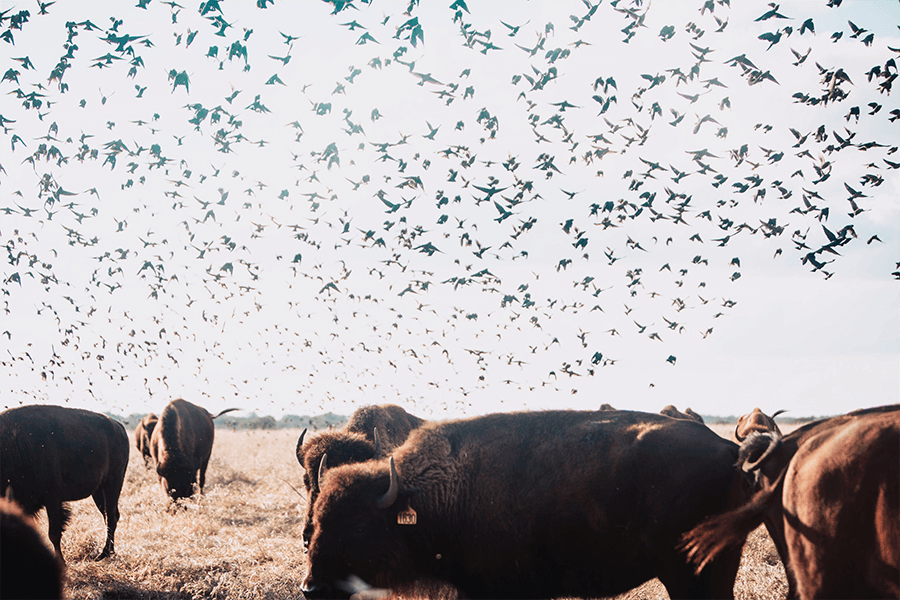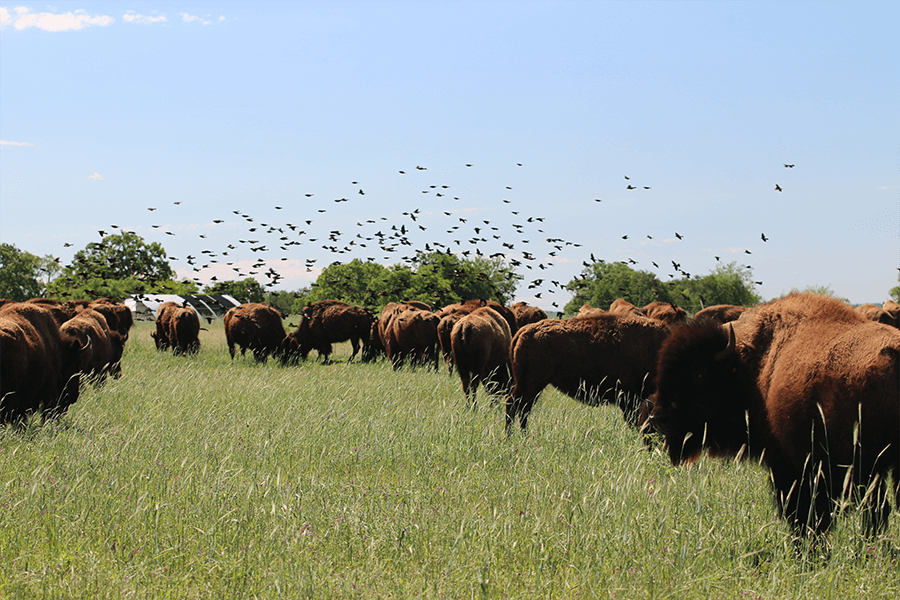One of the greatest joys that grassland ecosystems provide our planet is a sanctuary habitat for migratory and native birds. In these healthy and biodiverse habitats, it's not uncommon to find these grasslands teeming with life. From the billions of microscopic bio-organisms in the soil to the hundreds of different grasses, flowers, legumes, and forbes growing, intact grasslands create a perfect environment for hundreds of songbirds, hawks, and other ground-nesting birds.

Unfortunately, much of this precious and complex habitat is currently being threatened by mass endangerment due to grasslands rapidly being converted to crop production. Each year the Great Plains is losing 2.5 million acres of intact grasslands to monocultures of wheat, soy, corn, and canola. As a result, songbirds have declined by nearly 70 percent since the 1970s! This alarming rate of species decline is due to habitat loss, the destructive tools of industrialized farming, and our civilization’s misguided belief that plant-based agriculture is better for the planet.
Thankfully, there is a growing recognition of the problem, as well as a growing recognition for a solution that can restore damaged grassland ecosystems, enrich intact ecosystems, and help to solve the complex issues of food security as well as climate change. The answer is grazing livestock, managed in harmony with nature.
At ROAM Ranch, we have doubled down on the idea that large herds of ruminant animals can create a net-positive return on the planet. As a result, we are always searching for ways to work with nature to heal our previously cropped and highly degraded property. Turns out, bird populations are fantastic indicators of land regeneration. That means that when more birds are present on your property, it is safe to assume that the health of your land is trending in the right direction.
We allowed our previously sprayed, tilled, and monoculture cropped fields to return back to a mixture of annuals, perennials, and a diverse blend of cover crops. Our primary intention was to cover our soil, feed biology, and produce forage for our bison. To our amazement, we had unintentionally created a new habitat for birds to nest, hunt, and find the resources needed to thrive.
The amount of new species of birds returning to our ranch skyrocketed in response to the reintroduction of bison grazing our pastures. We initially considered the bison as tools for regenerating the mismanaged farmland, but through expressing their natural instincts, we unlocked a deep evolutionary synergism dating back hundreds of thousands of years. Healthy grassland ecosystems evolved through large herds of ruminant animals symbiotically increasing the health of the land through their grazing patterns. In return, these healthy grasslands provided an abundance of opportunity for billions of migratory and native birds. These birds served a few key roles in this complex system such as maintaining a healthy balance of desirable and undesirable insects, scratching through bison manure (thereby spreading fertilizer), and consuming parasites as well as other pernicious larva and flies. The effect that these birds had on the environment further enriched the opportunity for the bison to thrive as the bison further enriched the land on which they grazed.
In summary, this highly complex and continuously regenerating environment is our most powerful tool in combating climate change. Through their deep-root structures and photosynthetic metabolism, nothing is more effective at sequestering greenhouse gas emissions than deep rooted perennial plants in grassland ecosystems. These ecosystems have evolved to ONLY thrive with the presence of large herds of ruminant animals, and large herds of ruminant animals thrive with the presence of birds.

When we consider regenerating our planet, we cannot revert to a singular lens. Nature functions as a complex system of synergism, competition, and mutualism.
We believe in the critical importance of birds in thriving ecosystems to the extent that we have recently become the world's first Audubon Certified Bird Friendly bison ranch. This form of conservation ranching is a market-based approach to grassland bird conservation that empowers consumers to support management practices that benefit birds and other wildlife. When managed appropriately, bison (and other ruminant livestock) can actually improve bird habitat by diversifying structure and species composition.Through the Audubon Certified program, our ranch is now a part of the growing number of livestock producers working to ensure diverse bird habitat, healthy soil, abundant pollinators, and recharged aquifers.
The Audubon Certified Bird Friendly program works on the time tested truth that when you take care of your land, the land will take care of you and your civilization.



